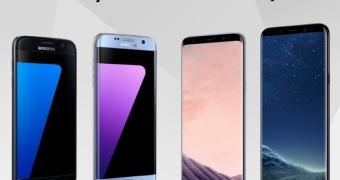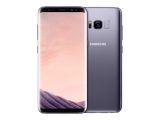The Galaxy S8 and S8+ are finally official, after months of speculation and anxious anticipation. We’ve already detailed the phones’ specs and availability, now it’s time to see how much progress Samsung has made in the one year since launching the Galaxy S7 and S7 edge.
In terms of design, Samsung made a giant leap and completely removed the physical home button, a trademark on many Samsung phones. The fingerprint scanner was relocated to the back of the Galaxy S8, next to the rear camera.
Samsung also upped the display size, offering a 5.8-inch Galaxy S8 and 6.2-inch Galaxy S8+, compared to the 5.1-inch Galaxy S7 and 5.5-inch Galaxy S7 edge. Thus, the Korean smartphone maker is betting big on large smartphones with Infinity Displays. Speaking of which, this year’s Galaxy S flagships don’t feature a flat variant, both devices have displays slightly curved at the edge. Screen resolution was also improved to 2960 x 1440 pixels, and aspect ratio is now 18:5:9.
There are few surprises in terms of components. As expected, the latest Galaxy S smartphones come with the top-of-the-line octa-core Snapdragon 835 platform built on the 10mn process. Battery capacity is the same as on the Galaxy S7 and S7 edge, while RAM memory is at the same level.
Iris scanner, Bixby and new services
Internal memory is now 64GB on both models, compared to the Galaxy S7 and S7 edge which came with 32GB variants. Obviously, a microSD card can extend memory to 256GB.
Samsung did bring improvements to the front camera on its newest phones - 8MP sensors that come with autofocus features and f/1.7 aperture. However, rear camera capacity surprisingly stayed the same at 12MP with tools like dual pixel and smart OIS.
Software is another area that Samsung worked extensively on, and the new Galaxy S8 marks the introduction of Bixby, Samsung’s very own virtual assistant. Moreover, the Galaxy S8 connects to various home devices using the Connect service, together with DeX station for a new experience. Another notable addition to the new phone is the iris scanner, previously seen on the Galaxy Note 7. The phones run the latest Android 7.0 Nougat version out of the box.
All in all, the new Galaxy S8 and S8+ stand out in terms of design and software, while providing top-of-the-line performance inside the flagship that competes for the title of “best smartphone of 2017.”

 14 DAY TRIAL //
14 DAY TRIAL // 
